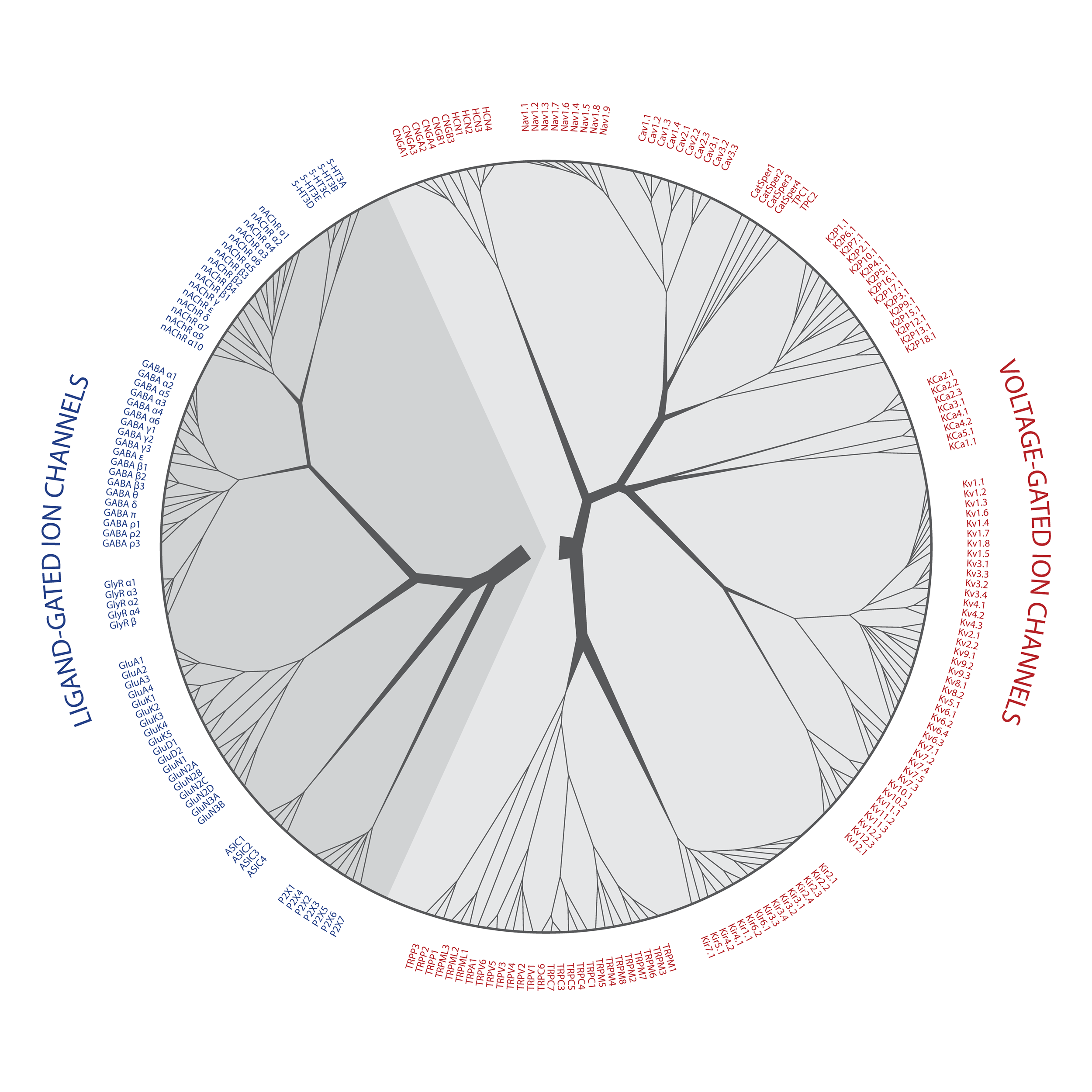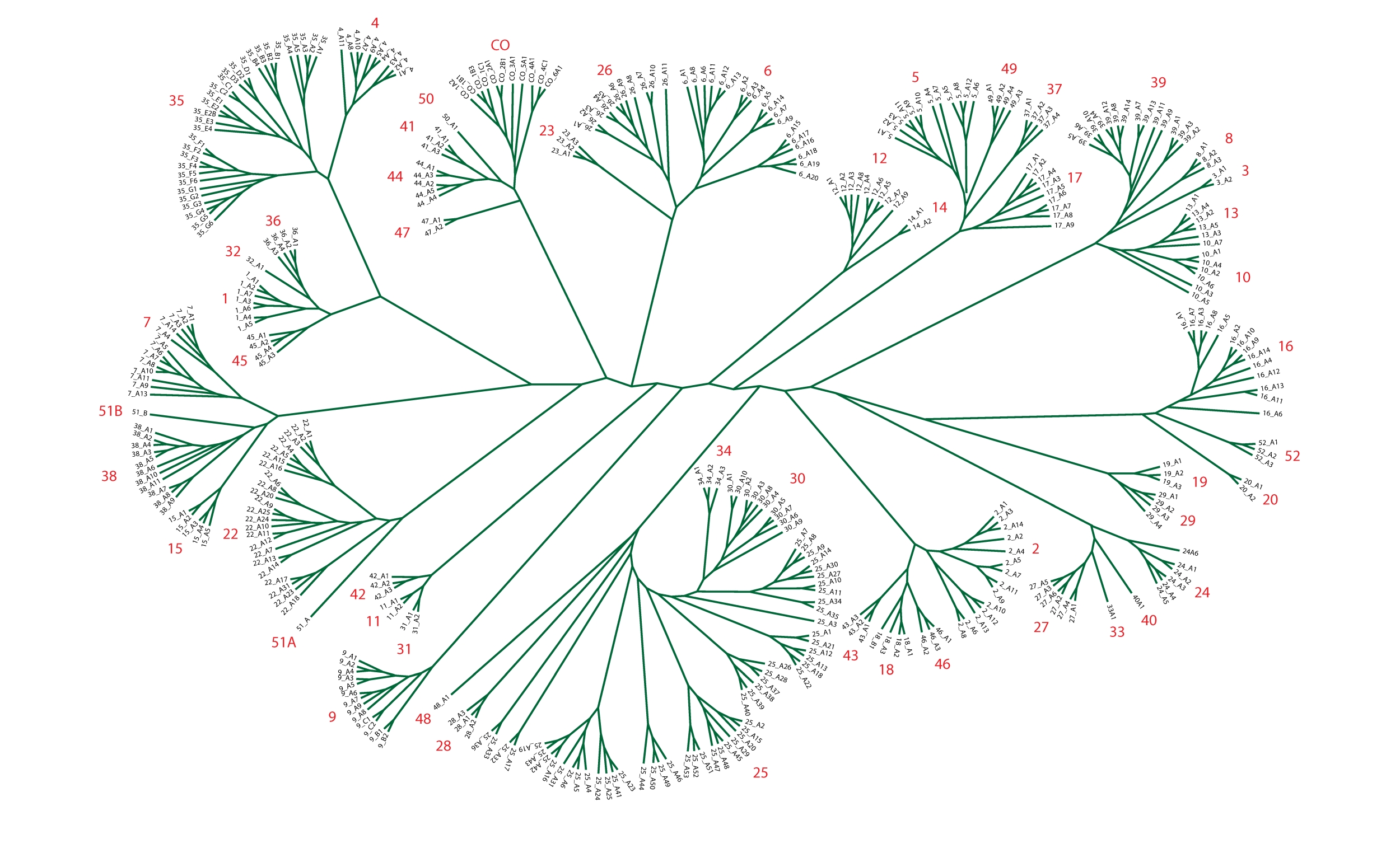Illustrations created for Pfizer to show relationships between members of protein families encoded in the human genome. The sequences are compared, and evolutionary relatedness inferred, and the relationships are drawn as a tree. At the edge are the proteins we find today, and the twigs and branches indicate the similarities. A pair of sequences where the branches meet near the edge of the circle are more similar, and we hypothesise that they diverged more recently; those with deeper branches are less similar, and we surmise that they are more distant evolutionarily.
Ion channel proteins (Wikipedia; Nature) are important in nerve function, as they help convert chemical signals into electrical ones. As well as being studied for basic understanding, it is hoped that targeting selected channel ions with drugs that block them could selectively reduce pain.
Solute carrier proteins (Wikipedia; ) sit in the membranes of cells and help the uptake of specific small molecules. There are many genetic diseases that arise through a defect in one of these proteins, and drugs targeted at these proteins are used in diverse conditions including depression, osteoporosis and hypertension.
Drawing the trees: I was provided the sets of sequences, and I carried out the phylogenetic analyses using freely available computer software and drew the trees from the distances these threw out. While the relationships are based on data, how I present the information is up to me, and I like the graphic feel of the Ion Channel Protein diagram, and the botanic feel of the Solute Carrier Protein diagram. The labels are those assigned by people cataloguing the sequences to the individual proteins or subgroups. For more information on phylogenetic trees, see Wikipedia, Study.com (video), Khan Academy (video / text) and many more.


